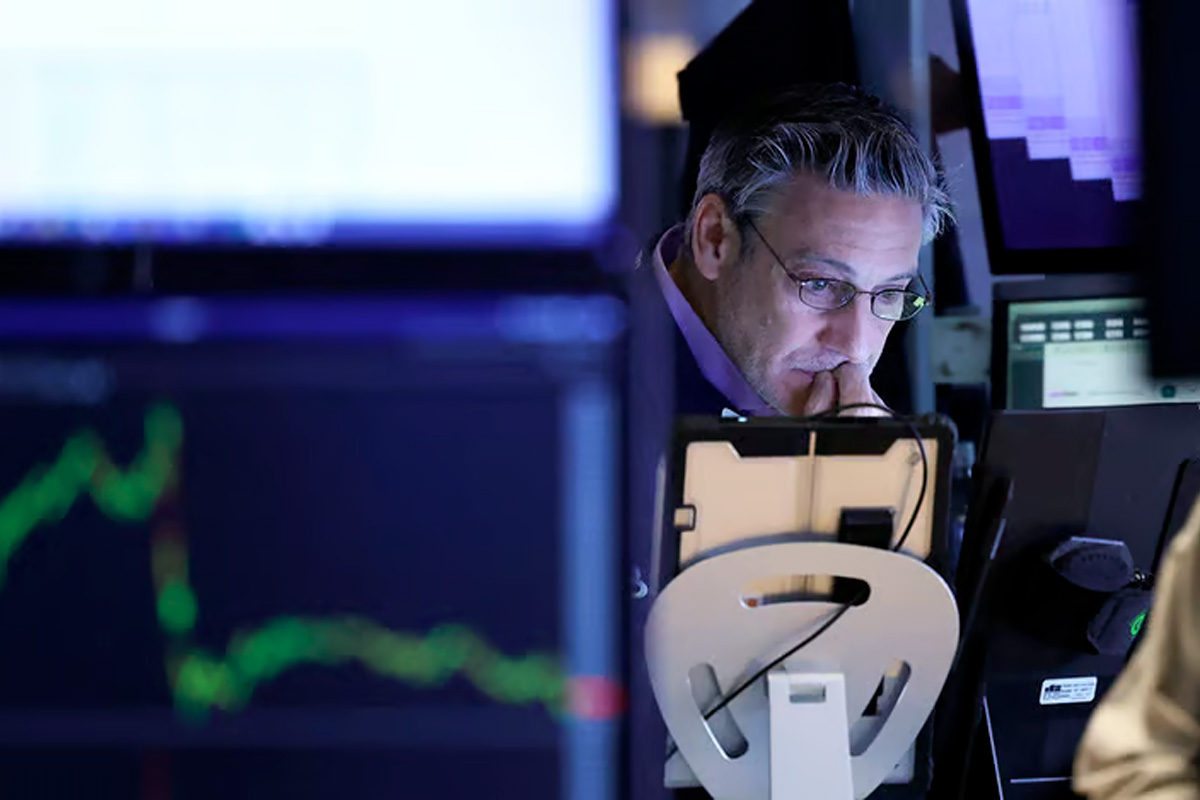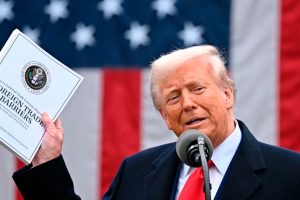AMERICAN STOCKS suffered along with the country’s trading partners on April 3rd, as both took a hammering from President Donald Trump. The announcement a day earlier of near-universal tariffs, and particularly steep levies against some Asian countries, shocked investors out of any complacency they may still have held regarding the new administration’s trade policies. The S&P 500 index dropped by almost 5% over the course of the day, leaving it down by more than 12% since its peak in February. Share prices of American firms reliant on imports and supply chains fell even more sharply: Best Buy, a retailer, ended the day down by 18%; Dell, a computer-maker, by 19%.
It was not just a bad day for American stocks. The dollar dropped by 1.6% against a trade-weighted basket of peer currencies, driven lower by a worrying economic outlook. Meanwhile, yields on five-year Treasuries have fallen from 4.6% in mid-January to 3.7%, as investors price in more aggressive interest-rate cuts by the Federal Reserve, which they expect will be required even as inflation remains above target.
All this reflects a fast-changing market dynamic. Absent a change of course by Mr Trump, his trade policies may bring an end to one of the great certainties of the past decade and a half of investing: American exceptionalism. The country’s stocks have risen by 360% since 2010, against a rise of 40% in the rest of the world—making America a magnet for foreign capital. In 2023-24 private foreign investors bought $268bn more in American stocks than they sold, according to the Treasury.
Now the trend is under threat for three reasons. One is that America’s stockmarket outperformance had been based on strong economic growth: between 2009 and 2023, American GDP per person rose by 1.4% a year on average. Britain, France, Germany and Japan managed only 0.6-0.9% a year over the same period. Meanwhile, the dollar rose by a quarter against a basket of peer currencies. In the years to come, however, Mr Trump’s tariffs will crimp American growth.
The second worry is that the administration does not seem to care about its role as a steward of the economy. Investors had come to believe that American governance was inherently more business-friendly than in, say, regulation-loving Europe or authoritarian China. Yet the bizarre way the level of tariffs was calculated—based on a measure of the countries’ trade deficits, divided by their exports to America—is a bad omen of the administration’s competence in other areas. The “Trump put” of the president’s first term, based on the idea that he would reverse any policies which caused stockmarkets to fall, may no longer apply.
Whatever happened, America would always dominate technology and innovation—that, at least, was the third plank of American exceptionalism. Yet even before Mr Trump announced his tariffs, the arrival of Chinese competition, particularly in the form of DeepSeek, an AI firm that boasts an impressive and seemingly cheap reasoning model, had threatened the pre-eminence of America’s tech giants. Although they may retain their technological lead, a closer contest threatens their valuations.
Some investors retain hope that a Trump put remains in play, albeit with the administration this time willing to tolerate more pain before changing course. If they are wrong, things will probably worsen. American stocks still look expensive compared with their international counterparts. For the firms embedded in global supply chains, the sell-off still reflects only some of the pain the permanent implementation of tariffs would inflict. There may be further to fall.
Información extraída de: https://www.economist.com/finance-and-economics/2025/04/03/what-americas-stockmarket-plunge-means






